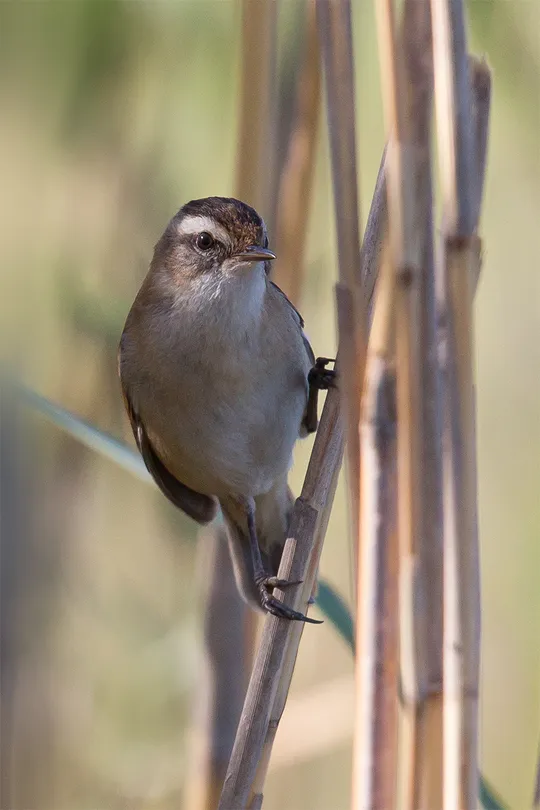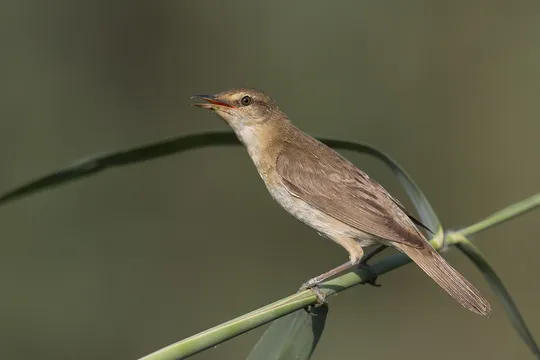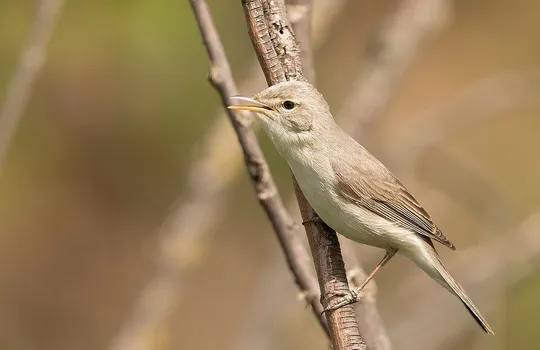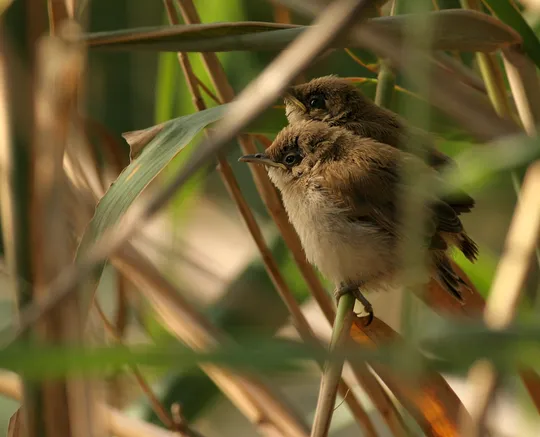Hippolais olivetorum
 Critically Endangered
Critically Endangered

| Habitats | Parks & Woodlands, Bush & Garrigue |
|---|---|
| Presence In Israel | Summer |
| Breeding In Israel | Breeder |
| Migration Types | Long Range |
| Zoographical Zones | Mediterranean |
| Landscape Types | Mountainous |
| Vegetation Types | Mediterranean Maquis, Mediterranean Garrigue |
| Vegetation Densities | Medium, Low |
| Nest Locations | Tree |
| Diet Types | Invertebrate |
| Foraging Grounds | Trees and Shrubs |
| Body Sizes | Small (up to 500g) |
| Threat Factors | Unknown |
The Olive-tree Warbler is the largest Hippolais warbler, with long legs and a long tail. Upperparts are dark grey-olive and underparts are whitish. It has long wings and a particularly long primary projection. The pale margins of the secondaries and tertials form a prominent pale patch in the center of the wing.
An extremely rare summer breeder in the Upper Galilee, migrating through Israel in small numbers. According to records from the 19th and early 20th centuries, it was once a summer visitor in central and northern Israel. It was re-discovered as a breeder only in the early 1990s in the Upper Galilee, from Mt. Meron, north and west to the Lebanese border (Gideon Sigali & Itai Shimshon, pers. comm., Shirihai 1996). The most recent records of breeding in Israel are from the early 2000s (Efraim Ezov & Yoav Perlman, pers. comm.).
The factors threatening the Olive-tree Warbler population are not known, and most of the habitats it occupies in the Galilee have not changed significantly during the past two decades. The Upper Galilee is the southern limit of the global population range and the species may be affected by global factors such as climate change, whose effect is greater in edge populations.
No specific conservation measures have been taken for this species to date.
The Olive-tree Warbler is classified as Critically Endangered (CR). There are no records of nesting in recent years, and the species is probably extinct as a breeder in Israel. Efforts should be made to locate breeding populations in Israel in order to obtain a better assessment of its status and to make decisions regarding its conservation.
A comprehensive survey should be conducted in the areas where the Olive-tree Warbler nested in the past, to try and locate relictual populations and to develop a management program for their preservation.
- פז, ע. 1986. עופות. מתוך אלון, ע. (עורך), החי והצומח של ארץ ישראל. כרך 6. הוצאת משרד הביטחון, ישראל.
- Shirihai, H., 1996. The Birds of Israel. Academic Press, London.
- Symes, A. 2013. Species generation lengths. Unpublished, BirdLife International.
- Species page at Birdlife International
Current Occupancy Map
| Data Missing | Sporadic | Limited Sites | Low Density | High Density |
|---|---|---|---|---|
| 0 | 0 | 0 | 0 | 0 |
Distribution maps
The maps presented here provide visual information on the distribution of species in Israel from the past and present, and the changes in occupancy and breeding density during the comparison period. For further reading
Relative Abundance 2010-2020
Breeding density values in the current decade as determined from experts' opinion and observations from databases.
| Data Missing | Sporadic | Limited Sites | Low Density | High Density |
|---|---|---|---|---|
| 8 | 12 | 12 | 21 | 19 |
Relative Abundance 1980-1990
Density values based primarily on the book The Birds of Israel (Shirihai 1996).
| Data Missing | Sporadic | Limited Sites | Low Density | High Density |
|---|---|---|---|---|
| 5 | 14 | 14 | 17 | 22 |
Occupancy 1990-2020
The map shows differences in the species breeding distribution between the 1980's breeding map and the current weighted breeding evaluation. Negative value - species previously bred in the grid and is not presently breeding; positive value - species has not previously bred in the grid and is currently breeding.
| Data Missing | No Change | Occupancy Increase | Occupancy Decrease |
|---|---|---|---|
| 6 | 35 | 1 | 9 |
Change in Relative Abundance 1990-2020
The map shows the changes in the relative abundance of a species in each of the distribution grids between the breeding map of the 1980s and the weighted current breeding evaluation. Negative values - decline in abundance; positive values - increase in abundance; zero - no change in abundance.
| 80 to 100 | 50 | 20 to 30 | No Change | 30- to 20- | 50- | 100- to 80- | Data Missing |
|---|---|---|---|---|---|---|---|
| 0 | 4 | 2 | 22 | 12 | 14 | 11 | 16 |
| Rarity | |
|---|---|
| Vulnerability | |
| Attractiveness | |
| Endemism | |
| Red number | |
| Peripherality | |
| IUCN category | |
| Threat Definition according to the red book |
 Contributed:
Contributed: 





